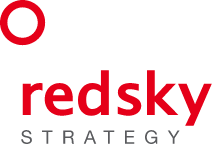News
Numbers and Statistics are Useless Without a Story

Math and numbers are notoriously considered by many to be dry and boring, but they don’t have to be. Most of us can remember our grade school days, and being asked to find how many apples Tommy bought for lunch for the week. There are people who love these kinds of math problems. But for kids who face them with dread, or just confusion, there is no excitement or purpose around finding quantities of apples — meaning there is no internal motivation, so there is no reason to want to solve the problem, aside from getting a good grade. It isn’t the numbers’ fault — it’s the absence of investment in creating a story. The lack of story is what makes the numbers dull and uninteresting. Why did Tommy buy so many apples?
When we examine a real-world problem or question, that makes numbers, data, and statistics compelling and illuminating. If a statistic answers a specific question important to someone’s life or job, then they will listen carefully. Not only does the story have to be told, but it also has to be told well. The backbone of this process is continually relating the data to design, business, or product objectives. This effort keeps the statistics relevant to the main set of questions or objectives at hand. Just as the best writers draw their readers into a book or movie, data must use numbers to build an immersive story.
When forming a story with data, the takeaways must be actionable. Insights go beyond simple project objectives and explore a company’s avenues as a whole. Much of actionability comes from statistical methodologies and unique equations, but their true value depends on the ability to seamlessly convey such results.
For example, on the qualitative side, one of our favorite methods for relaying this sort of data is through rich, detailed, and contextual video segments that form the user journey. These video clips come from a variety of research methodologies, such as ethnographies/diary studies or user interviews to tell a story. On the quantitative side, we have to become data visualisation experts, or even artists, carefully adjusting and shifting from varying charts and infographics to bring home the insight needed. As data viz expert David McCandless states, “Data is the kind of ubiquitous resource that we can shape to provide new innovations and new insights.”
Whether it’s a project around product positioning, go-to-market strategies, or qualitative research, we at RedSky aspire to bring that “Ah-ha!” moment, and give numbers a story. Our process of HumanSight™ solves the biggest problems for the world’s best brands by bringing the human experience to life. Our mission to deliver a more human-centric experience has driven us to create new methodologies — combining storytelling with quantitative and qualitative research. We aspire to bring about a more vivid understanding through a deep psychological and empathetic approach.
Interested in working with RedSky Strategy to shift your perspective and marketing strategies? Our team looks forward to meeting with you, and uncovering how we can use HumanSight to illuminate the best pathway to growth for your company.
